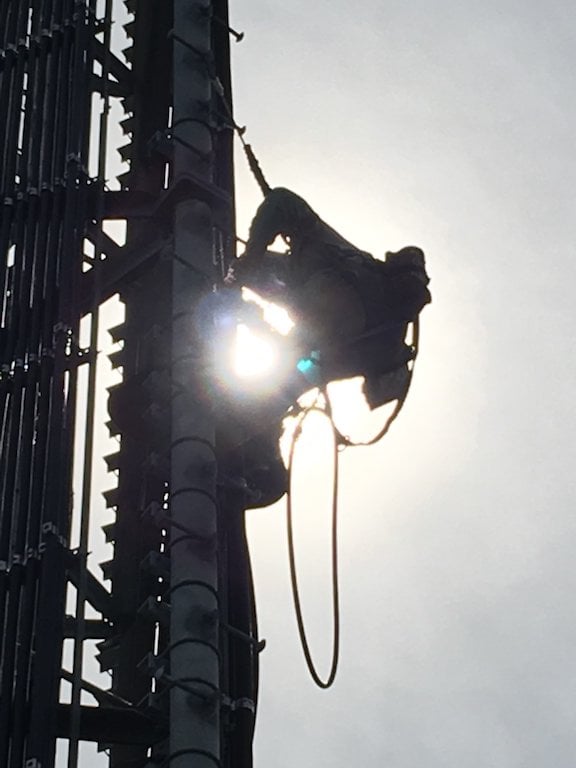Our world today is constantly communicating virtually, and now more than ever we rely on connectivity for work, school and on a personal level. Individuals are purchasing various devices and connectivity products, and the need for a stable network continues to expand. With the evolution of 5G, also known as the 5th generation of wireless network technology, information can transfer faster due to higher wireless frequencies.
Before 5G, the industry-standard was 4G cell towers that certainly helped improve our internet speeds and issues, but the demand and consumption of virtual content have led 4G to reach its capacity. With 5G, more cell towers are needed to support a comprehensive network and maximize coverage. Cell towers support cellular communication within a network on what most call a cellular tower or cell site. Many times, these two terms are used interchangeably but it is important to recognize the differences.
Cell Tower Types
Cell site, cell tower or cellular based station is the physical structure where antennas and electronic communication equipment are placed typically on a radio mast, tower or other raised structure. Most towers support multiple wireless carriers, public safety entities, or enterprise communications. The different types of cell towers include monopole towers, guyed towers, lattice or self-support towers, stealth towers, and microwave towers. Microwave transmission is the transmission of information by microwave radio waves which is an earlier technology form. In recent years, there has been an increase in the use of the microwave spectrum by new technologies such as wireless networks, and direct-broadcast satellites. Microwave cell towers are considered a specific, unique technology and hold a niche in the tower world. ANS has specifically skilled tower technicians who are experts with this technology and their years of experience are sought after.
Cell Site (Land) Site Acquisition Process
A cell site is defined as the entire set of equipment needed to receive and transmit radio signals for cellular voice and data transmission; typically includes transmitters, receivers, power amplifiers, combiners, filters, a digital signal processor, a power supply and network interface modules.
Cell sites can come in a multitude of forms such as a cell tower site, rooftop site, small cell, and outdoor or outdoor distributed antenna systems (DAS). Key steps required before any groundbreaking occurs are:
- Site Identification and Assessment
- File and Lease Audits
- Negotiations
- New Builds
- Amendments
- Entry Agreements
- DAS
- Small Cell
- Zoning Assessment and Management
- Permit Coordination/Acquisition
- Environmental and Regulatory Compliance
The site acquisition process is similar to purchasing real-estate; however, the due diligence timeframe can extend well into months and years. It is not unheard of to abandon the process and walk away from a land site based on obstacles and complications, regardless of vested time. For more information on cell towers and cell sites, read Types of Cell Towers and Cell Sites You Need to Know
Is It Possible To Build A Tower Independently?
The short answer to this question is no, not as a general rule. The long answer is possibly, but nine times out of ten there are strict restrictions and a multitude of requirements that will not allow a person to independently construct a tower. Before beginning any sort of construction on the tower, at least two of the main wireless carriers will need to present buy-in interest to lease a portion of the tower. If your land does not fit into a carriers pre-existing network infrastructure plans based on need and location, the chances of a tower being built are slim.
Permits and Site Surveying
A site acquisition/surveyor company will outline the first step in the process. The ability to build a tower can vary depending on the location of the property. Begin by assessing the distance between the location and the nearest cell towers. If located rurally, to qualify for a structure on the property the nearest tower should be at least three miles away, if suburban, one mile and if urban, a half a mile.
- Project Planning, Forecasting & Reporting
- Database Management
- A&E Management
- Design Review and Feasibility Analysis
- Quality Assurance
- Material Procurement and Management
- Budgeting
- Zoning and Permitting
- Construction Estimates, Management, Inspections
If the land does not meet these requirements, most wireless carriers would instead opt to modify the existing infrastructure instead of building a whole new structure.
Local Zoning Codes and Coverage
To find out local zoning codes the county or city’s zoning department would be the office to contact and ask about any prohibitions or requirements specific to the land. Most commercial or industrial locations are ideal for tower builds while residential areas are generally not allowed.
Another essential part of researching if a tower is right for a property is assessing if there is a need for wireless coverage in that specific location. Checking coverage maps, data reports, and bandwidth in the location of interest is critical.
Site-Work
Working on certain types of sites can present a multitude of different obstacles. Some of these challenges include:
- Managing potential discrepancies
- Minimizing disturbances to the surrounding community or businesses
- Preventing a potential power outage
- Supplying a consistent backup of coverage during construction
- Managing soil and weather conditions
- Making the site operational
The ANS Tower Team faced many of these challenges on a BTS tower site in Niskayuna, NY. Our team was able to mitigate delays, downtime, rework, and additional costs to keep the project on schedule and budget.
Finding Partners to Work With
Build to suit developers have a multitude of responsibilities to ensure that the tower is built correctly and safely. Establishing mutually approved vendors, obtaining permits, and determining ideal sites are just a short few. Outsourcing tower development allows major carriers to reduce capital expenditures and obtain speed to market against competitors.
Wireless providers are now facing the challenge of finding the best way to build and increase their presence of 5G towers. Consumers want connectivity and coverage, fast, and it is now a race for carriers to see who can deploy the fastest. The challenge to drive the United States infrastructures to the front line with 5G capabilities is moving in the right direction. The FCC and members are moving ahead with programs to keep the US first in the world with new technologies. Organizations such as the New York State Wireless Association (NYSWA) have partnered with other organizations such as NYersFor5G in support of 5G. ANS is actively involved with NYSWA, including its President, Paul Fettuccia as a board member on the executive committee and Denise Reed, Marketing Mgr. as a board member.
Why ANS
The ANS Tower Services team effectively manages all facets of the tower construction and antenna installation process from the initial site planning to final system turn-up, as well as in-house structural modification crews. We provide maintenance and monitoring on a contractual basis to periodically review, inspect, and anticipate any future structural issues that may cause an outage or a decrease in bandwidth. Our proven project management processes deliver results that meet or exceed customer expectations for quality and cost-effectiveness within critical project deadlines The ANS ComTrain Certified tower professionals can handle the most complex installations, and our complete turnkey services streamline the project and keep it on track.
Contact an ANS Team Member today to request a tower services consultation.





